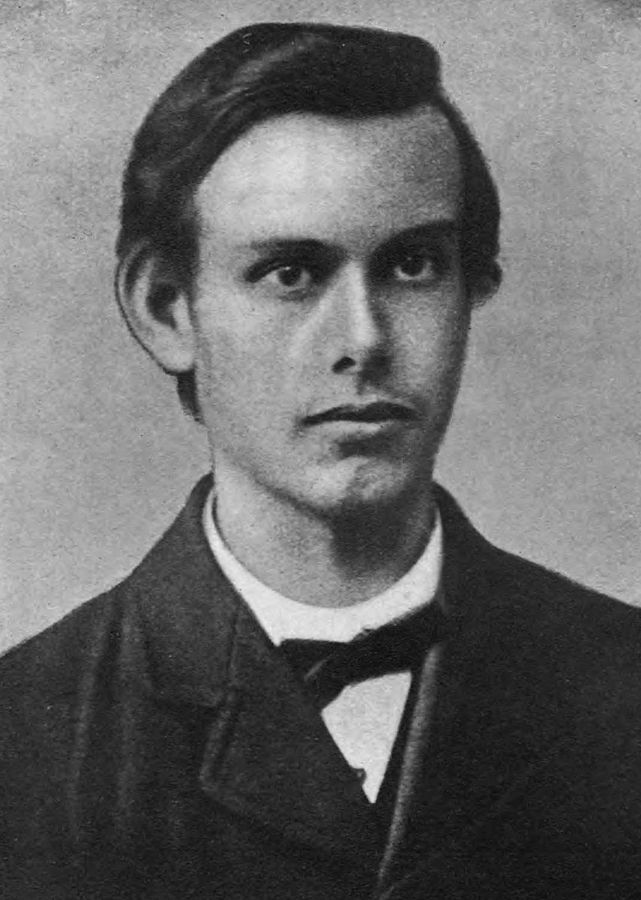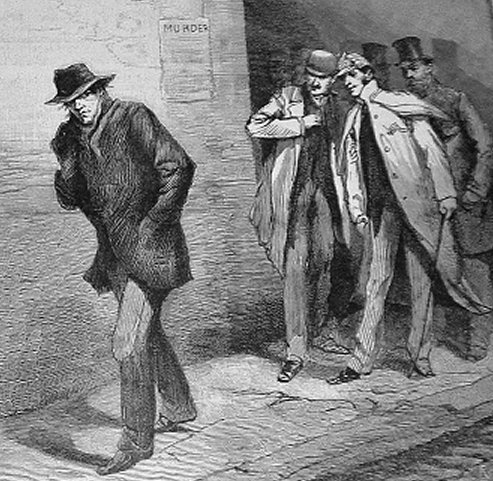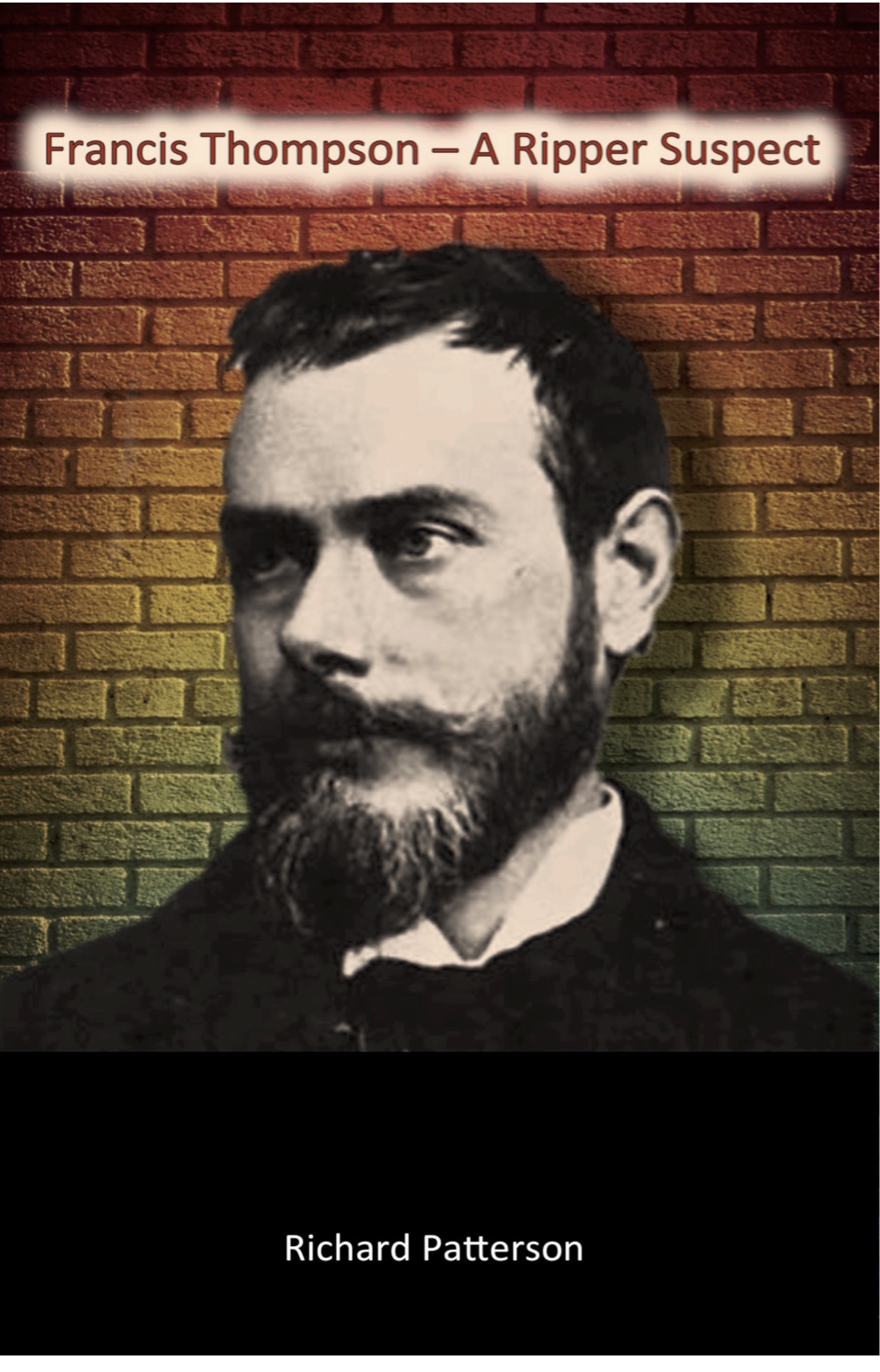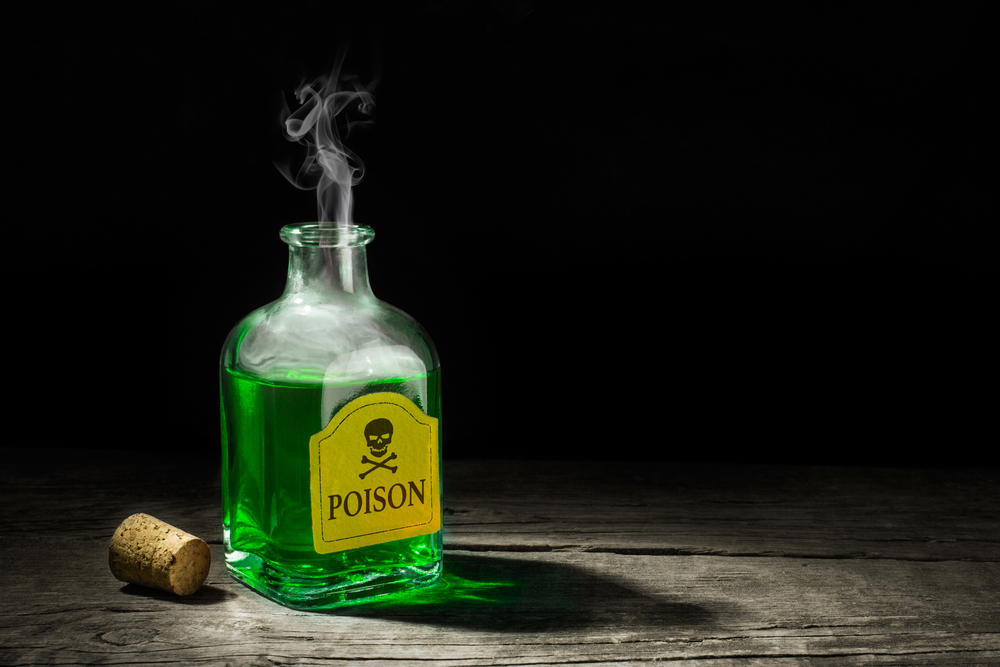
The thing that scares me most about the Jack the Ripper case is not the murders. Oh, no. It’s the number of suspects!
The list of men accused of the world’s most famous serial killing spree now far outstrips the number of victims, and fresh suspects appear every decade. With the publication of each new Ripper book comes totally convincing arguments that the newly introduced suspect could have murdered and mutilated at least five women in Whitechapel in 1888. That always leaves me with lingering questions:
Were Victorian men really that depraved? Were there so many of them really capable of history’s most famous serial killing spree?
The answers suggested in the Ripper literature frighten me more than the crimes, because collectively, they say yes.
With that ripe fodder, I’m opening a new historical true crime blog category: Ripper suspects. I don’t really have a favorite candidate and won’t advocate for one over the other. This category will present the suspects objectively.
One suspect, however, more than any other, gives me goose bumps. It’s not because I’ve singled him out as the most likely candidate. It’s because I knew him – through his poetry – even before anyone ever fingered him as Jack the Ripper, and viewed him as an eloquent champion of the Christian faith. Francis Thompson’s poem, The Hound of Heaven, accompanied me through my childhood with its haunting images of a God who pursues the fleeing sinner:
I fled Him, down the nights and down the days;
I fled Him, down the arches of the years;
I fled Him, down the labyrinthine ways
Of my own mind; and in the mist of tears
– Francis Thompson, excerpt from The Hound of Heaven
As it turns out, Francis Thompson knew a few things about sin. At La Trobe University, in Melbourne, Australia, Richard Patterson discovered a Thompson-Ripper connection in a research project. He’s continued investigating Thompson for twenty years and just published the book, Francis Thompson – A Ripper Suspect. Patterson will be a featured speaker at Ripper Conference this coming November in London. (You can read more about him at the end of the post.)

Reading Patterson’s book gave me a wholly different view of the poet who inspired both J.R.R. Tolkien and G.K. Chesterton. Now I’d be afraid to travel back in time and meet him. Here’s why.
Mr. Patterson, What are the strongest arguments for Francis Thompson as a Ripper suspect?
Apart from his prose and poetry in which he wrote on killing prostitutes with a knife before the murders and writing about killing women with a knife after the murders, Thompson had the means and opportunity to have committed the Whitechapel murders. In researching the life of Francis Thompson it can be shown that during the final murder Thompson was living in the Providence Row night refuge. This was a homeless shelter situated at the end of Dorset Street, the street that the last Ripper Victim, Mary Kelly, was killed in. As well as being only yards away from Kelly, Thompson, during the murders, lived within walking distance of all the murders. I can also show that Thompson was carrying a dissecting scalpel, and being homeless at the time, it was always in his coat pocket. Added to this, Thompson had trained as a surgeon for several years. He had been trained in dissection techniques that are similar to the wounding done to the victims. Thompson also may have been a suspect who was questioned by the London City Police, at the time of the murders. Thompson’s motive can be primarily traced to the fact that not long before the murders began, Thompson was rejected by a prostitute, who broke up with him and fled him. All the victims were prostitutes.

Who first recognized Francis Thompson as a Ripper suspect? When and why?
In 1988, the year that coincided with the anniversary of the Whitechapel murders, Dr. Joseph Rupp, a Texan forensic pathologist, published an article “Was Francis Thompson Jack the Ripper?” It came out in a British journal the ‘Criminologist’. His article examined Thompson’s medical skill discussed Thompson living as a vagrant in London during the murders. Rupp explained that Thompson was seeking out a prostitute who had left him. I have spoken with Dr. Rupp many times, since making contact with him in early 2015. He told me he had studied the works of Francis Thompson and as well as his pathology, he had in interest in poetry. Rupp, who had been introduced to the works of Francis Thompson in college and knew a little about his life, could see how Thompson could be the murderer. Rupp’s article was the first to openly suggest Thompson was the Ripper. My book shows that it appears that other writers have also hinted, before Dr Rupp’s article, that Thompson was the Ripper
Thompson wrote a poem, Nightmare of the Witch-Babies, about a knight stalking and killing a prostitute and then cutting out her uterus to find two unborn children. Was that a usual topic for Victorian literature?
And its paunch was rent [her belly was ripped] Like a brasten drum [burst drum];
And the blubbered fat
From its belly doth come
It was a stream ran bloodily under the wall.
O Stream, you cannot run too red!
Under the wall.
With a sickening ooze – Hell made it so!
Two witch-babies, ho! ho! ho!
– Francis Thompson, excerpt from Nightmare of the Witch-Babies
Victorian literature has always had a dark gothic element and the industrial revolution with the accompanied rise of science and medicine brought with it a morbid fascination in anatomy. Novels and serialized magazines, which dealt with the exploits of criminals like the body snatchers Burke and Hare and highwaymen, were also very popular. Even with all this interest in crime and medicine, the gruesomeness and visceral intensity of Thompson’s poetry, in which he reveled in the gory detail of killing and disembowelment of women, surpasses the darkest fiction of the likes of Edgar Allan Poe or Thomas Dequincy. No other works by any other author focuses so strongly or takes such delight in describing the mutilation of women. Only the sardonic Jack the Ripper letters provide any comparison.
Did Jack the Ripper ever cut the uterus out of any of his prostitute-victims?
Yes. Annie Chapman, who is known as the Ripper’s second victim, had her uterus removed.
Has anyone performed handwriting and/or linguistic analyses to compare Thompson’s poems to Jack the Ripper’s purported letters?
Yes. In my research I visited the Kew archives in London and took forensic photographs of the Dear Boss letter. This is a letter that has become infamous for the belief that the killer had written it during the murders and sent it to Central News Agency in London. The letter boasted of the crimes and it is from this letter that the name Jack the Ripper originates. I believe I am the first and only person to have taken photographs of the Dear Boss letter, using a template superimposed over it, so that it could be used as evidence in a court of law. I also travelled to Boston College’s Burns Library in the United States. Here are the most comprehensive archives of Francis Thompson’s letters and manuscripts. I also took photos of Francis Thompson’s handwriting. In 2009 I sent samples of Thompson’s writing and the Dear Boss letter to a document forensic examiner. He concluded that the handwriting did not match. I have not sought a second opinion. Proving that Francis Thompson wrote the Jack the Ripper letters would only show that Thompson knew about the murders and not that he was the Ripper, but I still believed that once my research was complete, people would enquire if it could be shown whether Thompson wrote the Ripper letters, the Dear Boss letter, in particular. Others, such as Dr. Joseph Rupp, have urged me to get a second opinion and also see if Thompson’s handwriting matches other purported Ripper letters, such as the From Hell, letter that was sent to a member of a Whitechapel vigilance committee. The letter was accompanied by a piece of kidney preserved in a cardboard box and some believed that this kidney matched a Ripper victim. As of now, I believe that some of the Ripper letters may have been written by Thompson, and that the Dear Boss letter was written by another person who knew both about the Ripper crimes and about Thompson’s personal circumstances. I detail this in my book and provide an explanation for who wrote the Dear Boss letter and why.

Some authors say Jack the Ripper displayed anatomical knowledge in mutilating his victims. True? Or just a Ripper myth?
I believe it is true. That the Ripper held anatomical knowledge was also something that some of the doctors who examined the victims and some of the police who investigated the case also believed.
In your book, you describe how the poet mutilated dolls as a child. How does that strengthen the argument for Francis Thompson as a Ripper suspect?
When criminal psychologists have studied serial killers and looked at the formative years, they have seen that serial killers show a propensity for mutilation themes in their childhood. Although acts of mutilation does not automatically lead to serial killing they are considered as factor which shows a latency of serial killing. Childhood mutilation acts are one of three indicators which psychologists have named the Triad. The other two are fire-starting and arson as well as bedwetting. Of the bedwetting, I have seen no evidence that this can be applied to the poet, but Thompson, on several occasions, started fires.
As a medical student, Francis Thompson paid money to dissect extra cadavers. Was that usual for a medical student of his time? To what extent might it have pointed to a pathological interest in dead bodies?
Paying extra for anything was unusual for medical students at the time, and probably is still unusual. It should be noted that Thompson’s medical school saw the practical study of anatomy as far more instructive then the reading of textbooks. So it could be argued that teachers would have urged that students spent their extra money on working on more cadavers than was usually allowed. None the less, his family expressed surprised that Francis Thompson spent so much on extra cadavers.
How close did Francis Thompson live to the victims at the time of the murders?
Because Francis Thompson was a vagrant from 1885 to 1889 and spent most of his time living on the streets, it has been hard to track his whereabouts. What we do know is that he used the Salvation Homeless shelter in Limehouse which was the district adjacent to Whitechapel where the murders happened. We also know that he spent nights walking along Mile End road, which is a busy thoroughfare in Whitechapel. It can also be established, by Thompson’s own admission that he stayed in Providence Row. The most likely time, given the strict entry conditions of the Row, was during the first weeks of November 1888. Mary Kelly was killed on November 9th. From the building Thompson had his bed in, a resident could look out the window down the 80 or so yards to the covered archway that led to Mary Kelly’s bed. No other known suspect can be shown to have lived so close to one of the murder sites.
Did Thomson experience any significant life events when the Ripper murder series started?
Yes. Criminal psychologists look to what stressors where in in play, when a serial killer first begin murdering. Just before the Ripper murders, a prostitute who he had been living with for a year dumped Thompson. She fled him after she found out that he had become a published poet. Included in the submission of poems delivered to the editor that published a poem of Thompson’s was his ‘Nightmare of the Witch Babies’ poem that detailed the killing of prostitute. Previous biographers have stated that Thompson’s friend left him because she did believed that their relationship, if he became an established writer, would cause a scandal. Thompson was devastated by her leaving him and this emotional upheaval happened at the same time of his transition from a homeless man to a working journalist with responsibilities. Thompson was also a long time opium addict, just before the murders Thompson also began to withdraw from a drug that he had been on for many years. I believe that all of these things as well as earlier traumatic episodes in his life and a previous mental breakdown contributed to his mind snapping and him living out in reality what he had only previously reserved for the pen
Why do you think Thompson stopped killing?
Because doing so became physically impossible. Only days after the last murder, Thompson was placed in private hospital for exhaustion and taken to a faraway, male-only country monastery. He spent most his remaining years in monasteries and when he did live in London it was under supervision and within a limited area, far away from where the murders happened. As my book explains, his return to London, however, coincides with other murders, some of which have attributed to Jack the Ripper.

In his book, “The Cases that Haunt Us,” FBI behavioral scientist John Douglas offers a criminal profile of Jack the Ripper. He says the extent of the mutilation of the Jack the Ripper’s last victim, Mary Jane Kelly, indicates the Ripper was at the end of his rope, psychologically speaking. Such a person would have trouble functioning in society. Does that speak against Francis Thompson as a Ripper suspect? In other words, do you think Douglas’s assessment still would apply to a former medical student trained in the Virchow technique of organ removal at autopsy, and who had already “mutilated” a number of bodies, albeit for medical school dissection?
Yes it would. Thompson’s physical condition and his letters and written work reflect a man at the brink of a complete nervous breakdown immediately after the murders and on several occasions in the following years.
You’ve indicated that Thompson’s editor covered up evidence of the poet’s guilt. How?
After Thompson’s death, in 1907, his editor, who lived until 1948, took complete control of Thompson’s papers. Within days of Thompson’s death, his editor orchestrated the revising of Thompson’s life by suggesting that Thompson hated his medical studies and spent all his time in libraries instead of the surgery. That Thompson stayed at Providence Row, which Thompson himself wrote about in essays and articles, was erased from subsequent publications. Other works of Thompson which showed Thompson in a bad light were burnt by his editor. His editor also made unauthorized alterations to Thompson’s work, removing references to murder and killing women. His editor saw nothing wrong in forging Thompson’s signature so that it would appear that the altered poems were original works.
Thank you, Richard Patterson!
Were you already familiar with Francis Thompson through his poetry? Given what you just read about him, would you feel comfortable meeting him in a dark alley?
Literature on point:
Robert Patterson, Francis Thompson – A Ripper Suspect (self-published, February 2016)
Francis Thompson, The Hound of Heaven (1893, public domain)
Francis Thompson, Nightmare of the Witch-Babies (unpublished, 1887, public domain)
____
Richard Patterson biography:
Born in Melbourne in 1970, Richard Patterson, a High School Teacher, independently determined that Thompson may be the Ripper in 1997. Patterson’s continued research has made him a guest speaker at the 2005, UK Jack the Ripper Conference, held in Brighton. He has been invited to speak again on his book and his latest findings at the 2016 Conference to be held in London. He has had articles published on the theory in newspapers, magazines and journals. He authored the Francis Thompson page on the Ripper Casebook, the world’s most visited Ripper website. His research into this suspect has made news headlines around the world. Media interest includes, The UK Express, The Lancashire Evening Post, The UK Daily Mail, The UK Huffington Post, The Christian Science Monitor Magazine, The New York Daily News, The UK Sun, The UK Daily Star, The Examiner.com, The UK North West Tonight News & Sydney’s 2UE Radio Station, The Echo, and The Northern Star.
Patterson’s research relies on press reports, police documents, letters, biographies, uncut-volumes, and the first hand examination of historical and artifacts relating to the case. These include the Ripper’s infamous ‘Dear Boss’ letter of which Patterson personally handled, at London’s Kew Archives. He also visited the Burns Library at Boston College in the US, where Patterson read Thompson’s notebooks of 1888, and many other original documents including Thompson’s private letters.




Richard Patterson is mistaken when he describes Francis Thompson looking out of his room window in the direction of Dorset Street. The street position of the sleeping area defies this observation. In addition, the windows in the Men’s Refuge were not clear glass in the lower sash position. Also, they were positioned at least 6 feet high from floor level. FT would need to stand on the shoulders of a tall inmate to get a glimpse out.
Richard creates a most fanciful, fantasy, fiction about FT being “The Ripper”. In my imagination, The Mother Superior and her holy Sisterhood convent community are more likely suspects. At times, they carried The Viaticum to the death beds of the local roman catholic faithful at any time in the night. They were also most sensitive to bad publicity of prostitutes using the Refuge detracting from the benevolent response of donors. The mind boggles.
Thanks for commenting, Anthony. I’m not familar with Whitechapel, so your observation is valuable. I’m curious about how you know about the windows in the Men’s Refuge — from personal inspection or from books? And from the latter, which one(s)?
Hi Anthony. Thank you for your opinion as to who the Ripper suspect/s would probably be. A nun is just as likely as anyone to be a murderer, given the motivation and the Sisters of Providence Row were within walking distance for all of the murderers.
Your explanation that shows your strong knowledge of the refuge’s architecture for why you think I am wrong is interesting. It is interesting that we could argue about the view of a stairwell, only because the answer might alter the chance that Thompson was the Ripper. I don’t know of any other named Ripper suspect, apart from Thompson where such small details are so largely important, and that is interesting.
As Francis Thompson was from Preston, was he responsible for John Gill’s murder in Bradford. Did he travel back in December.
http://www.jack-the-ripper-tour.com/generalnews/the-murder-of-john-gill/
I’d have to ask the author of the book. I’ll message him. Thanks for commenting.
I don’t know — I’ll have to ask the author. I’ll message him.
Hi Mark, Thank you for the question. The murder of John Gill was such a horrendous crime. The strength of violence done to the poor boy certainly matched atrocities committed against the Ripper victims.
By November 15, 1888, Francis Thompson was off the streets and placed in a private sanatorium for exhaustion after wandering Whitechapel trying to find his lost prostitute lover. Thompson was released on Christmas day and on New Year’s Eve he left London heading south to the town of Storrington.
Thompson did not travel any further north than London until 1891. It is possible that during December 1888, Thompson could have left the sanitarium and returned before his release on December 25th.
I read Richard Patterson’s book and had some very interesting and cordial message exchanges with him.
I think that Francis Thompson is an “underrated” but extremely plausible JtR suspect! He is in the right age group and has a documented history of being psychologically very unstable. He was an on-and-off opium addict. Some of his poems show extremely violent and bloody mutilating phantasies towards “sinful” women. He was roaming in the area where the five canonical JtR murders were committed, at the right time. He had extensive anatomical knowledge and dissecting skills. He carried a scalpel, and he was looking for prostitutes – or, according to him, a specific prostitute. I don’t buy this explanation btw. We only have Francis Thompson’s narrative. Who knows what kind of relationship he and this elusive prostitute really had and what exactly led to her vanishing. There’s no proof that this selfless and angelic prostitute even existed! I think it is very unrealistic that this veritable Mary Magdalene vanished completely from the streets of Whitechapel just as Francis Thompson’s career as a published poet started to take off. This story actually seems to be “borrowed” from what happened to another broken poet who lived much earlier, and there may well be a much darker scenario than the one supplied by Thompson.
While there is no material clue which connects Thompson with the JtR murders, this is unfortunately true for all other JtR suspects, too! Therefore it’s a bit unfair to dismiss Patterson’s suspect solely because there’s no smoking gun pointing at the poet. Thompson is a much more plausible suspect than many other Ripper candidates.
But the Francis Thompson theory has one major problem: opiate addicts are rarely violent and highly active while they are under the influence of this drug. And when they suffer from acute withdrawal symptoms they may become violent and reckless – but not in the highly coordinated and daring and swiftly executed fashion of the Ripper! Therefor the time window where Thompson may have been physically and mentally capable of commiting the murders, was very small. He needed to be beyond the period of heavy physical withdrawal symptoms, and he needed to be fit and healthy enough for killing and mutilating these women. Since his biographers point out how run-down Thompson was and how much his health had permanently suffered from his years of drug abuse and homelessness, it’s hard to imagine that he was physically capable of commiting these violent killings. But this small time window – after he was off the drug and cleaned up a bit, and before he was stashed away in various institutions and monasteries – would explain neatly why the Ripper stopped his killing spree after having butchered Mary Kelly.
Thanks for your insightful comment, Sabine. I hadn’t been aware that opiate addicts are rarely violent.
I too think that Francis Thompson is an underrated suspect. But what bothers me about him as a suspect is the argument that the Ripper had to have medical knowledge. My understanding is that is contested — we don’t necessarily need to be looking for a doctor as a suspect. Of course, that doesn’t rule Thompson out.
Hi Ann.
Here is a great link to a great book called
Opium and the Romantic Imagination
By Alethea Hayter.
The link discusses the effects of hyperaesthesia particularly on poets, as Thompson was. It describes this brief stage of withdrawal from long term opium use and how it heightens the senses and causes hyper-arousal.
Thank you for the wonderful interview. Lots of love.
Richard
https://books.google.com.au/books?id=UdwpCgAAQBAJ&pg=PT111&lpg=PT111&dq=hyperaesthesia+opium&source=bl&ots=uVnh7Vh5p2&sig=ACfU3U2F_MztG8iCsrcDEvA5Tyr79_Y6jA&hl=en&sa=X&ved=2ahUKEwj-_v2I1enyAhXlzjgGHVESAD8Q6AF6BAgaEAM#v=onepage&q=hyperaesthesia%20opium&f=false
Thanks, Richard!
Hi Sabine,
Thank you for liking my suspect. Your long response is very interesting and has much in it for why Thompson deserves a closer look.
You argue that Thompson’s opium intake influences the chance that he is the Ripper. I use the same argument in my book, only I explain that upon immediate withdrawal for long term opium abuse addicts enter an intermediate period of withdrawal which is accompanied by acute hyperaesthesia.
This condition makes the senses highly receptive and also causes disturbances of vision and smell that can bring on hallucinations and nightmares. The sex drive greatly increases. These symptoms can last for up to six weeks.
Interestingly, in psychology, Jeanne Siaud-Facchin defined hyperanthesia as an “exacerbation des sens”. He wrote that gifted children and adults are especially susceptible because he felt that, for them, the sensory information reaches the brain much faster than the average, and the information is processed in a significantly shorter time.
In August 1888, the poetic genius Francis Thompson, after a decade of self-medication on the sedative of laudanum, was forced to stop using.
Thompson was still homeless and looking for his prostitute lover at that time. This was when the sedative-like effects of the Opium in the laudanum he consumed, would have been wearing off. Only to be replaced with hyperaesthesia, which to an energetic genius young poet, must have something like being on cocaine.
I’m glad that you wrote and let me think about all this again.
I have carefully read Thompson’s “witch-babies” poem and have noticed only a few striking elements of it that could connect him with the “Ripper” crimes. First of all I must state that DESPITE what I have read ABOUT it, I DON’T see anything pertaining to the killing of whores IN it. Thompson plainly described the lovely young damsel (seemingly a VIRGIN) as morphing into her true form of a corruption ridden demonic hag (NOT hoe) whose two children by the Devil are contradictorily and psychoschizically named “Lust” and “Lust’s Disgust”. The witchbitch’s belly bursts asunder (sort of like the death of the traitor-apostle Judas as described by the apostle Peter in the “Acts of the Apostles”) from the corruption with which she is rife with the two rotten babies of sin within her womb that ooze out from it “like slime” and attack the (SEEMINGLY) virtuous knight. The knight DOES NOT attack her—— he merely chases her inflamed with his own lustiness ( hence he rides a swarthy/dark/black steed) until he sees his corruption reflected in her, or what he would make of her. Knights of yore were more known for their horrific habit of wenching than for virtuous chivalry. Chivalry ISN’T dead. It NEVER lived! This is what Thompson is trying to convey to a self-deluded society more myopic than our own modern ones. In attacking him, the knight is consumed by the very effects of the passions with which he was already ‘infected”. “It is not what is from without that defiles a man, but from what is WITHIN.” The knight DOES NOT “rend her belly” or “rip her up” and mutilate her. Her own natural corruption as a witch mating with Satan does that. The place the knight is riding through is not specific but it may be a city. London is indicated by the reference to a “strand” of shankbone and mistiness but nothing else, and no group of whores IF ANY are mentioned being cut up. It seems more likely he is out on the mist covered rusty-red peat bogs of the moors.
All that being said, the few elements that have a connection with the “Ripper” crimes are first the odd laughing refrain of “Ha Ha!” found also in many of the “Ripper” letters. Secondly, there is the mention of Hell, like the “Ripper” letter signed “From Hell”. Next there is the mention of the “groans of dead men’s bones”. One of the “Ripper’ letters displays a crudely drawn skull and crossbones at the top. Finally, and what I find most fascinating, is the mention of the “Land of the Bare Shank-bone”. This seems to relate covertly to the exposed bone of Mary Kelly’s flayed thigh. However, according to medical dictionaries, the femur is NOT the “shankbone”—- the tibia in the lower portion of leg is; specifically the portion extending from just below the knee-joint to just above the ankle. What is SIGNificant about this fact is that JUST BELOW THE KNEE of Kelly’s raised, flayed right leg we see a cut slicing around it almost resembling a garter!! Either the killer/mutilator is making a reference to the exposed garter being the “sign” of the immodest whore/slut, OR it is a sky reference to the SHANKBONE!! But the latter theory only makes sense if the killer was Jewish because the shankbone plays a SIGNificant part in the ritual of the Pesach (Passover Festival) and Thompson WASN’T Jewish, either by religion or ethnicity.
Thanks for your insights, Richard. Like all poetry, Thompson’s is open to interpretation, and I’m not an expert enough to respond to your reading of the poem. However, I will ask my interviewee Richard Patterson if he’d like to respond. My understanding of the word “shankbone” is that it refers to an animal’s tibia. I took an anatomy class in college and never heard anyone refer to the human tibia as shankbone. Isn’t it more of a butcher’s term for a sheep’s tibia and the meat surrounding it?
Hi Ann.
It was great to read again, this fantastic interview you did with me. I really appreciate your support and I am greatly impressed by your work in the field of historic unsolved true crime.
I also don’t think that Thompson’s use of the word shank can be seen to have any direct connection to the murder of Mary Kelly, but when I first read the word in his Witch Babies poem, I did also thought of Mary Kelly and evisceration done to her right leg.
Perhaps a coincidence, or a clever trick of foreshadowing.
Richard. 🙂
Thanks for your thoughts on the topic, Richard.
I forgot to mention two other interesting coincidences. The atrocious mutilation of Kelly R(who was supposed to be the youngest and prettiest of the whores killed by the “Ripper”)
could represent in his mind the change of the “lovely young damsel”in the poem into the “ugly, demon-ridden hag” reeking and oozing with corruption. Also Kelly was killed sometime Friday night—– the SABBATH—- Day of WITCHES as well as JEWS. And finally the mention of “blood flowing under the wall” parallels the bloody deaths of several of the whores NEXT TO WALLS—- Chapman, Stride, and Kelly.
Although I feel there is compelling circumstances to indicate FT may have been the Whitechapel murderer, RP’s details often fall well short and come across as sensationalist, even slander or defamation.
There is no mention of cutting up women in the poem Nightmare of the Witch Babies. None at all. The reference to opening up a belly is the belly of one of the babies, and this seems to be done by the witch baby, read it – properly.
Having a view from a window doesnt make a murderer and the hostel in question was a closed hostel meaning the murderers were all locked in at night.
There is no evidence FT was ever stopped or questioned by the police.
The reference to extra bodies to practice on comes from FT asking his father for money to do this, I believe as told by FT’s sister. Has anyone contemplated that FT was trying to get money for something else like drugs?
Every assumption, presumption or detail of fact put forward by RP is never backed up with a reference. Its all, well he had this vague unverified detail or other but he was a fervent Catholic so that proves it doesnt it?
Where is the reference that FT carried a surgical blade at all times during 1888? Who would have even known this?
RP’s accusations that FT hated women is not founded in evidence. FT does mention hags here and there but that seems to be about it.
RP seems to be preoccupied slandering FT on the basis that he was a Catholic and therefore a religious maniac, so easy these days to drum up support for that right?
I think because there is no evidence FT should be presumed innocent. Defaming and slandering a good man is wrong.
Not only that but we need less of this kind of writing in the JR world where everyone is searching for the truth. Its all too convoluted with nonsense that sells books with a disclaimer saying Im not saying he did it and I dont know who did.
What makes not only the Whitechapel case so interesting, but also Francis Thompson’s life and poetry, is that they are open to interpretation. You can take any Ripper suspect and make similar arguments for and against. I at least can follow Richard Patterson’s interpretation of the Nightmare of the Witch Babies with the paunch being rent. I personally have no idea who Jack the Ripper was, but I will allow people to make their case for their favorite suspect on my blog. Thanks for commenting, though.
Anne Marie, thank you for responding.
The “paunch being rent” refers to the second “Witch Baby” – named “Disgust” – not a woman. In your blog the quote is presented out of context, missing the preceding verses, giving a totally false impression of the poem and FT.
There seems to be no explanation of how this happened in the poem, giving an impression the baby did it. RP continues to falsely claim in several places that FT wrote about running women through with a knife, giving this poem as one example.
Further, RP gives the example of FT’s locality to the Mary Kelly murder, that he at some time stayed in a nearby locked hostel, as another example of his coincidental and circumstantial connection to the Whitechapel murders, together with FT’s surgical background.
It is well known that the Mary Kelly murder was committed by someone who was described by the experts at the time as obviously having no medical or even animal slaughter experience.
The description of the murderer (in the astrakhan coat) as seen escorting Mary into her home defies any similarity to what would have been an emaciated FT at the time
For my readers, here’s a link to the entire poem, “Nightmare of the Witch Babies.” I can see how one could interpret the poem as Disgust’s paunch being rent, as Disgust was the second witch baby. Nevertheless, I can see how one would wonder about the topic of the poem and about Francis Thompson’s mental health. I’ve asked Richard Patterson to respond to the points you raised. Let’s see what he says.
disappointed to see a fair comment refuting this false information about francis thompson and encouraging debate was prohibited from appearing here. what does that make this blog? discredited and unreliable at the very least.
Please don’t take it personally that I didn’t get around to approving your comment yesterday. I had outside commitments and never made it online yesterday. Your comment went live today.